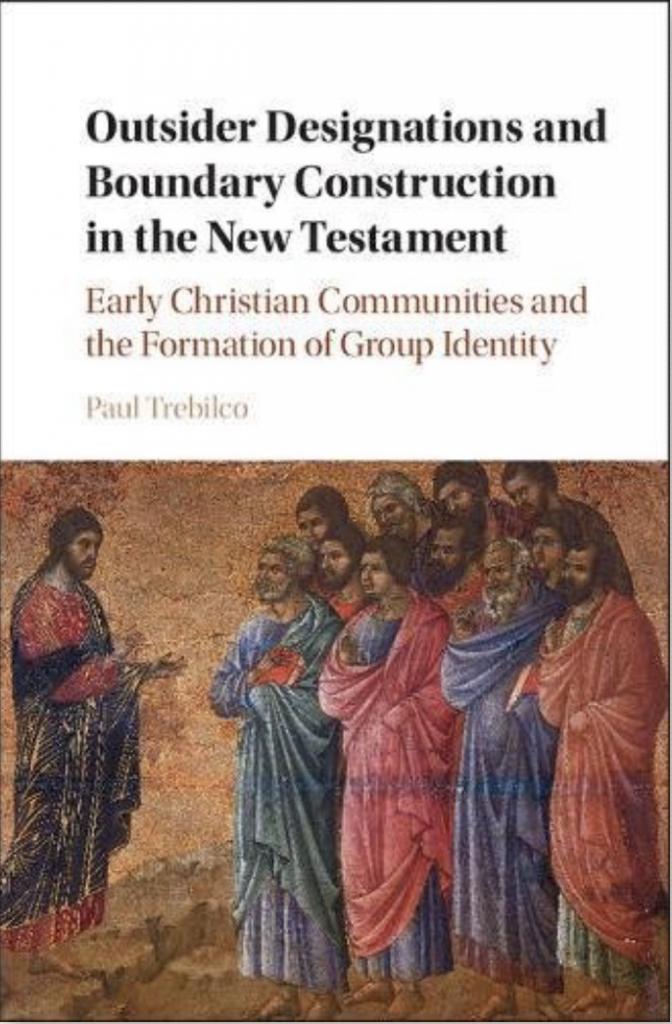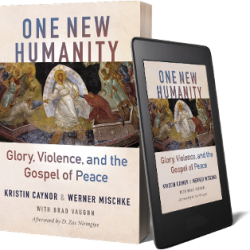Some of the richest insights when interpreting the Bible come when readers attend to its subtle details. In Outsider Designations and Boundary Construction in the New Testament, Paul Trebilco demonstrates the fruit of such labor. In this book, he turns his attention to how outsider designations assist one’s interpretation of Scripture and shed light on the early Christian movement.
Who are “sinners”?
 The discussion of οἱ ἁμαρτωλοί (“the sinners”) in chapter 6 typifies the insights offered in the book. It shows how Jesus and Paul altered conventional ways of using “sinners.” In the Gospels, Jesus undermined this well-known outsider label in two ways.
The discussion of οἱ ἁμαρτωλοί (“the sinners”) in chapter 6 typifies the insights offered in the book. It shows how Jesus and Paul altered conventional ways of using “sinners.” In the Gospels, Jesus undermined this well-known outsider label in two ways.
First, he applies the term “sinners” to those whom he accepts as followers. Second, one sees in other passages, “Jesus is redefining ‘sinners’: they are no longer blatant lawbreakers, but rather those who reject him” (p. 129). As Trebilco summarizes, Jesus “un-othered the other.”
Despite appearances, Paul, like Jesus, also subverts the term by contending that “‘sinners’ need be outsiders no longer” (p. 140). Paul’s entire way of talking about sin obliterates typical outsider designations (p. 133‐36, 219‐25). Whereas “sinner” previously referred to a select group of social undesirables, Paul applies the term to everyone. By designating all humanity as “sinners,” he magnifies the extensive reach and power of sin.
His manner of speaking has two consequences.
1. Paul effectively levels the social pecking order. The scorned and esteemed alike are equal before God. He reorients readers’ perspectives of honor and shame.
2. Reckoning all people “sinners” magnifies the glory of Christ’s victory over sin and death. Everyone should honor the king who saves humanity.
In summary, Paul here defends God’s honor, casting his opponents into the role of “outsiders.” Their own Scriptures nullify their claim to have status (or “face”) before God. Ironically, the law exposes the futility of human boasting. The law dishonors those who boast in the law.
“Outsider” Language
Biblical writers also demonstrate flexibility and creativity when using outsider designations. For instance, Treblico highlights the uncommon (if not unprecedented) use of ἄπιστος to identify outsiders as “unbelievers.” He adds,
“‘Unbelievers’ as a designation is a strongly negative term that creates a much higher boundary than ‘low boundary terms’ like ‘neighbours,’ or ‘all people.’ Those designated by this term do not have the key insider-feature of πίστις [faith]” (p. 51).
Even more generic terms for “outsider” (e.g., οἱ ἔξω, οἱ ἔξωθεν, ἰδιώτης) draw a clear distinction between insiders and outsiders. Trebilco sharpens the point by noting how ancient writers made a “strong contrast between ἀδελφοί [brothers/siblings] and all other non-family members who are ‘outwards’ – ἔξω” (p. 100).
Still, he warns against the impression that outsider designations were intended to “vilify or demean outsiders.” In 1 Corinthians, for example,
“[Paul] encourages social differentiation from these clearly labeled ‘outsiders’ but without a corresponding social distance” (p. 58).
It’s noteworthy that Paul also changes how he refers to “outsiders.” He has no desire to provoke tension or raise the suspicions of the governing authorities. Trebilco notes a tone shift in Romans 13, which speaking of governing authorities.
The lack of any “high boundary” terminology in 13:1–7 (such as “outsiders,” “unbelievers,” “the unrighteous”) means that the emphasis is on the ways the Christ-believing community can be part of and belong to the wider society. . . . Not only will being “good citizens” mean the Christ-believing group will not attract adverse attention from the authorities, or from any casual visitor to the group, but also the way in which Paul makes this call, with its general terminology (“good and bad” [v 3], “respect and honour” [v. 7]) recognisable to all and its lack of high boundary outsider designations, emphasises harmony and good relations in society. (p. 229)
In Romans, Paul’s critique of outsiders is indirect. Paul uses low boundary terms in Romans 13 to carefully avoid language that breeds unnecessary division or disrespect.
The function of such outsider terms is to highlight the significant change brought about by Christ. However, in some passages, “the actual language he uses to refer to outsiders encourages harmonious relations” (p. 225). Thus, in Rom 12:14–13:10, Paul
“avoids (whether consciously or unconsciously) terms that create a strong social and theological dualism” (p. 231).
The Strategic Use of Outsider Language
According to Trebilco, NT writers strategically blend high boundary terms as “a clear demarcation of group identity” and low boundary terms to “encourage interaction and mission” among outsiders (p. 279). Strong boundary lines serve different purposes. In 1 Corinthians, Paul’s outsider language seeks to
“reinforce the distinctiveness and ‘set-apartness’ of the Christian community,” whose identity was threatened by their conformity to the surrounding culture.” (p. 215)
The early church did not eradicate all social distinctions; in a sense, they reinforced the lines that distinguished insiders from outsiders. Trebilco concludes,
“to undermine all outsider labels would be to destroy group boundaries and hence group identity.” (p. 286)
Accordingly, this book will benefit anyone who wants to consider how biblical writers understood and shaped the church’s sense of identity amid diverse social groups.
This post adapts what I have written elsewhere in Reading Romans with Eastern Eyes (p. 72, 168-69) and my review of Trebilco’s book initially published in Themelios.












